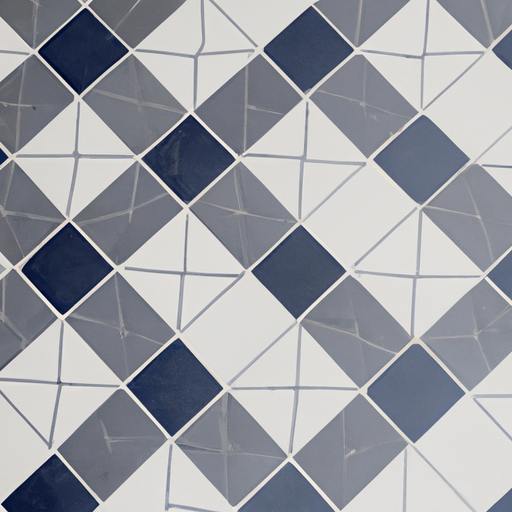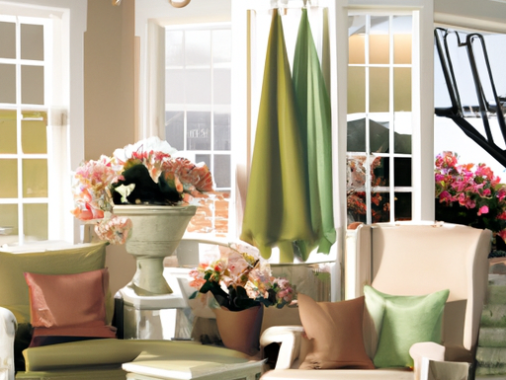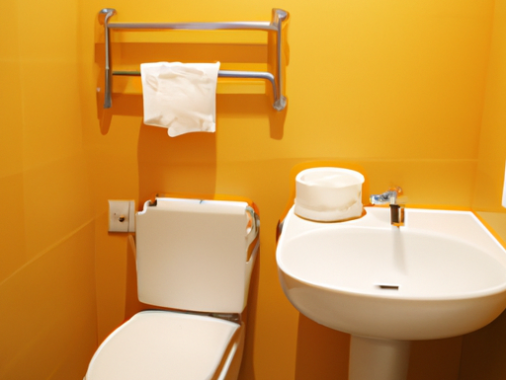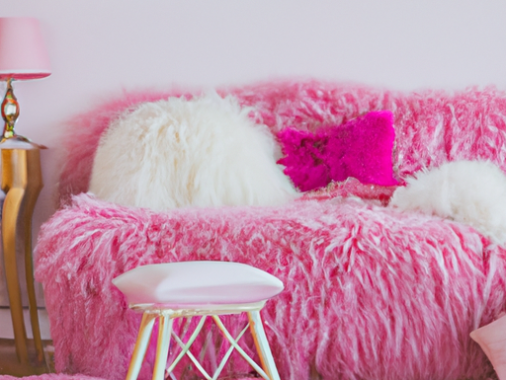-
Table of Contents
- Introduction
- How to Choose the Right Geometric Tile Floor for Your Home
- The Benefits of Installing Geometric Tile Flooring
- Creative Ways to Use Geometric Tile Flooring in Your Home
- The Pros and Cons of Geometric Tile Flooring
- Tips for Installing Geometric Tile Flooring
- How to Care for Geometric Tile Flooring
- The Latest Trends in Geometric Tile Flooring
- Q&A
- Conclusion
Introduction
ing
Geometric tile flooring is a great way to add a unique and stylish touch to any room. It can be used to create a modern, contemporary look or to add a classic, timeless feel. Geometric tile flooring is available in a variety of shapes, sizes, and colors, making it easy to find the perfect design for any space. With its versatility and durability, geometric tile flooring is an excellent choice for any home.
How to Choose the Right Geometric Tile Floor for Your Home
When it comes to choosing the right geometric tile floor for your home, there are several factors to consider. First, you should think about the overall look and feel of the room. Geometric tiles can be used to create a modern, contemporary look, or a more traditional, classic look. Consider the existing décor in the room and choose a tile that will complement it.
Next, consider the size of the room. Geometric tiles come in a variety of sizes, so you should choose one that will fit the space. If the room is small, you may want to opt for smaller tiles, while larger rooms can accommodate larger tiles.
You should also consider the material of the tile. Ceramic and porcelain tiles are the most common, but there are also glass, stone, and metal options available. Each material has its own unique look and feel, so choose one that will best suit the room.
Finally, consider the color of the tile. Geometric tiles come in a variety of colors, so you should choose one that will match the existing décor in the room. If you are looking for a bold statement, you may want to opt for a bright, vibrant color. If you are looking for a more subtle look, you may want to choose a neutral color.
By taking the time to consider these factors, you can ensure that you choose the right geometric tile floor for your home. With the right tile, you can create a beautiful, unique look that will last for years to come.
The Benefits of Installing Geometric Tile Flooring
Geometric tile flooring is a popular choice for many homeowners due to its versatility and unique design. This type of flooring can be used to create a variety of looks, from classic to modern, and can be used in both residential and commercial settings. Installing geometric tile flooring can provide a number of benefits, including increased durability, improved aesthetics, and easier maintenance.
Durability is one of the main advantages of installing geometric tile flooring. This type of flooring is made from ceramic or porcelain, which are both extremely durable materials. The tiles are also resistant to scratches, stains, and moisture, making them ideal for high-traffic areas. Additionally, the tiles are easy to clean and maintain, which helps to extend their lifespan.
Geometric tile flooring also provides an aesthetically pleasing look. The tiles come in a variety of shapes, sizes, and colors, allowing homeowners to create a unique design that fits their individual style. The tiles can be arranged in a variety of patterns, such as a checkerboard or herringbone, to create a visually interesting look.
Finally, geometric tile flooring is easy to maintain. The tiles are easy to clean and can be swept or mopped regularly to keep them looking their best. Additionally, the tiles are resistant to staining and fading, so they will retain their original look for years to come.
Overall, installing geometric tile flooring can provide a number of benefits. This type of flooring is durable, aesthetically pleasing, and easy to maintain, making it an ideal choice for many homeowners.
Creative Ways to Use Geometric Tile Flooring in Your Home
Geometric tile flooring is a great way to add a modern, stylish touch to any home. Whether you’re looking to make a bold statement or just add a subtle hint of pattern, geometric tile flooring can be used in a variety of creative ways to enhance the look of your home. Here are some ideas for how to use geometric tile flooring in your home:
1. Create a Focal Point: Geometric tile flooring can be used to create a stunning focal point in any room. Use a bold pattern to draw the eye and create a unique look.
2. Accentuate a Room: Geometric tile flooring can be used to accentuate a room. Use a subtle pattern to add texture and interest to a space without overwhelming it.
3. Create a Pathway: Geometric tile flooring can be used to create a pathway in your home. Use a patterned tile to create a unique and eye-catching path from one room to another.
4. Add a Splash of Color: Geometric tile flooring can be used to add a splash of color to any room. Use a bright pattern to add a pop of color and bring life to a space.
5. Create a Statement: Geometric tile flooring can be used to create a statement in any room. Use a bold pattern to make a statement and add a unique touch to your home.
No matter how you choose to use geometric tile flooring in your home, it’s sure to add a modern, stylish touch. With so many options available, you’re sure to find the perfect pattern to fit your style and enhance the look of your home.
The Pros and Cons of Geometric Tile Flooring
Geometric tile flooring is a popular choice for many homeowners due to its unique and eye-catching design. While it can be a great addition to any home, it is important to consider the pros and cons of this type of flooring before making a decision.
Pros
One of the main advantages of geometric tile flooring is its durability. This type of flooring is made from hard materials such as ceramic, porcelain, or stone, which makes it resistant to scratches, dents, and other damage. Additionally, geometric tile flooring is easy to clean and maintain, as it does not require any special cleaning products or techniques.
Geometric tile flooring also offers a wide range of design options. This type of flooring comes in a variety of shapes, sizes, and colors, allowing homeowners to create a unique and stylish look for their home.
Cons
One of the main drawbacks of geometric tile flooring is its cost. This type of flooring can be quite expensive, especially if you choose higher-end materials such as marble or granite. Additionally, installation can be time-consuming and labor-intensive, which can add to the overall cost.
Geometric tile flooring can also be slippery when wet, which can be a safety hazard. To reduce the risk of slipping, it is important to choose a tile with a textured surface or to use a non-slip sealant.
Overall, geometric tile flooring can be a great addition to any home. However, it is important to consider the pros and cons before making a decision. By weighing the advantages and disadvantages, you can make an informed decision that will best suit your needs and budget.
Tips for Installing Geometric Tile Flooring
1. Prepare the Subfloor: Before installing geometric tile flooring, it is important to ensure that the subfloor is properly prepared. This includes cleaning the surface, checking for any irregularities, and leveling the floor.
2. Measure and Mark: Measure the area where the tile will be installed and mark the center point. This will help ensure that the tiles are laid out in a symmetrical pattern.
3. Lay Out the Tiles: Begin laying out the tiles from the center point. This will help ensure that the pattern is symmetrical and that the tiles are properly aligned.
4. Use Spacers: When laying out the tiles, use spacers to ensure that the tiles are evenly spaced. This will help create a professional-looking finish.
5. Cut Tiles as Needed: If necessary, use a wet saw to cut the tiles to fit the space. Be sure to wear safety glasses and gloves when using the saw.
6. Apply Adhesive: Once the tiles are laid out, apply the adhesive to the back of each tile. Be sure to follow the manufacturer’s instructions for the adhesive.
7. Install the Tiles: Carefully place the tiles in the adhesive and press down firmly. Use a rubber mallet to ensure that the tiles are properly seated.
8. Grout the Tiles: Once the tiles are installed, it is time to grout them. Use a grout float to spread the grout over the tiles and then use a damp sponge to remove any excess grout.
9. Seal the Grout: After the grout has dried, it is important to seal it. This will help protect the grout from staining and make it easier to clean.
10. Enjoy Your New Floor: Once the grout is sealed, your new geometric tile floor is ready to be enjoyed!
How to Care for Geometric Tile Flooring
Geometric tile flooring is a great way to add a unique and stylish look to any room. However, it requires special care to keep it looking its best. Here are some tips for caring for your geometric tile flooring.
1. Clean Regularly: Regular cleaning is essential for keeping your geometric tile flooring looking its best. Sweep or vacuum the floor regularly to remove dirt and debris. Then, mop the floor with a mild detergent and warm water. Make sure to rinse the floor thoroughly after mopping to remove any residue.
2. Use the Right Cleaning Products: When cleaning your geometric tile flooring, it is important to use the right products. Avoid using harsh chemicals or abrasive cleaners, as these can damage the tile. Instead, opt for a mild detergent or a specialized tile cleaner.
3. Seal the Tile: Sealing your geometric tile flooring can help protect it from dirt and stains. Apply a sealant to the tile after it has been installed and then reapply it every few years. This will help keep the tile looking its best for years to come.
4. Avoid Scratching: Geometric tile flooring can be easily scratched, so it is important to take steps to avoid this. Place mats or rugs in high-traffic areas to protect the tile from scratches. Also, avoid dragging furniture or other heavy objects across the floor.
By following these tips, you can keep your geometric tile flooring looking its best for years to come. With proper care and maintenance, your tile flooring will remain beautiful and stylish for many years.
The Latest Trends in Geometric Tile Flooring
Geometric tile flooring is a popular choice for many homeowners looking to add a modern touch to their home. Geometric tiles come in a variety of shapes, sizes, and colors, allowing for a unique and eye-catching design. The latest trends in geometric tile flooring are all about creating a bold statement with bold shapes and colors.
One of the most popular trends in geometric tile flooring is the use of large-scale tiles. These tiles are typically larger than traditional tiles, and they can be used to create a dramatic effect. Large-scale tiles can be used to create a focal point in a room, or to create a unique pattern. They can also be used to create a modern look in a traditional space.
Another trend in geometric tile flooring is the use of bold colors. Bright colors such as red, yellow, and orange can be used to create a vibrant and eye-catching look. These colors can be used to create a modern look in a traditional space, or to create a unique pattern.
Finally, geometric tile flooring can also be used to create a unique texture. Textured tiles can be used to create a unique look in a room, or to add a touch of texture to a space. Textured tiles can be used to create a modern look in a traditional space, or to create a unique pattern.
Geometric tile flooring is a great way to add a modern touch to any home. With the latest trends in geometric tile flooring, homeowners can create a unique and eye-catching look in any space.
Q&A
ing
1. What is geometric tile flooring?
Geometric tile flooring is a type of flooring that features a pattern of shapes, such as squares, rectangles, triangles, hexagons, and other geometric shapes. It is often used to create a unique and eye-catching design.
2. What are the benefits of geometric tile flooring?
Geometric tile flooring is a great way to add visual interest to a room. It can also be used to create a modern, contemporary look. Additionally, geometric tile flooring is durable and easy to clean.
3. What types of materials are used for geometric tile flooring?
Geometric tile flooring is typically made from ceramic, porcelain, or stone.
4. How do I install geometric tile flooring?
Geometric tile flooring should be installed by a professional. The installation process involves laying out the tiles in the desired pattern, applying adhesive, and grouting the tiles.
5. How do I care for geometric tile flooring?
Geometric tile flooring should be regularly swept and mopped to keep it clean. It is also important to seal the tiles to protect them from moisture and stains.
6. Are there any special considerations for geometric tile flooring?
Yes, it is important to make sure that the tiles are laid out in a way that will not create any weak points or gaps. Additionally, it is important to use the correct adhesive and grout for the type of tile being used.
7. How much does geometric tile flooring cost?
The cost of geometric tile flooring will vary depending on the type of tile, the size of the area being covered, and the complexity of the pattern. Generally, it is more expensive than traditional tile flooring.
Conclusion
ing
Geometric tile flooring is a great way to add a unique and stylish touch to any room. It is a timeless and classic look that can be used in both modern and traditional spaces. With its versatility and durability, geometric tile flooring is a great choice for any home. It is easy to maintain and can last for many years with proper care. With its wide range of colors, shapes, and sizes, geometric tile flooring can be used to create a unique and beautiful look in any space.




